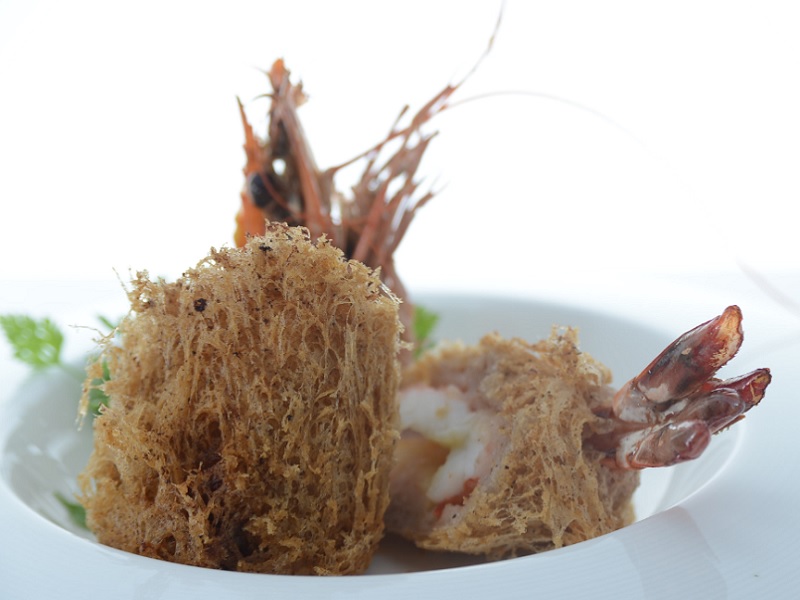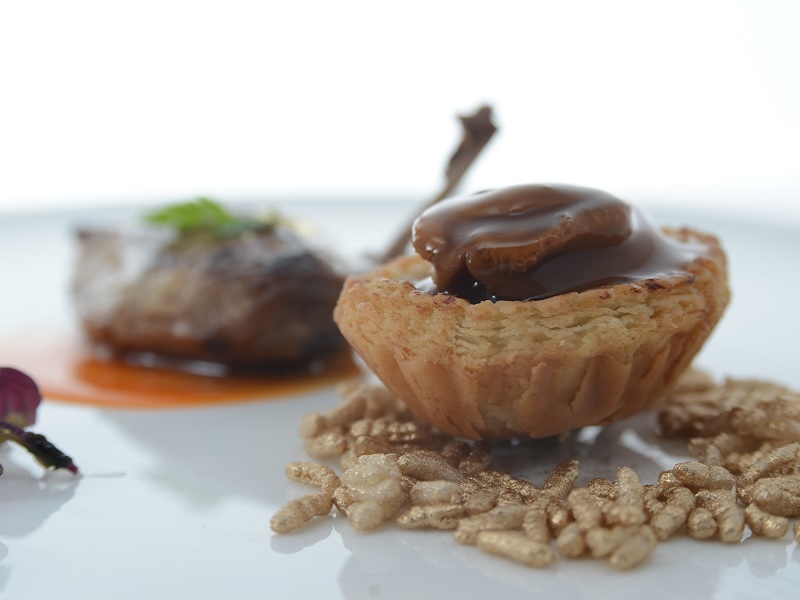Eight Treasures Rice by Chef Brian Wong of Wan Hao
by Qian Leung
@ 26 Jan 2018

Traditionally, eight treasures rice is made of auspicious ingredients, such as lotus seeds for a sound marriage, and candied melons for sweetness in a relationship. Other ingredients phonetically remind the hearer of good things, such as dried longan, which sounds like ‘reunion’, and dried tangerine peels, which sounds like ‘good luck’. In some places, such as Shanghai, it typically features sweet lotus paste hidden within steamed glutinous rice. Elsewhere, the eight treasures are stuff within a roasted duck, or made with wood ear and cloud ear fungus for a vegetarian rendition. How would a chef in Singapore reinterpret traditional new year dishes? Let’s take a closer look.
For Chef Brian Wong of
Wan Hao, Chinese new year was always a time when Dad was not around, because his Dad was a chef, too, and would be busy in the restaurant kitchen. “So, usually, I would help my Mom in the kitchen,” says the 35-year-old Johor Bahru native. “There would be vinegar pork trotter, curry chicken, and stewed sea cucumber; as kids, we’d also go set off fire crackers just for fun.” Before presenting the eight treasures rice, he introduces a reinvented version of an abalone dish. “Inside the puff pastry, there are lap cheong and yun cheong (preserved Chinese sausages), which we ordered from Hong Kong,” says Chef Wong. Setting the abalone over a flakey crust gives the traditional dish, usually eaten with black moss, a dim sum look and feel. To season a quail breast, angelica root, wolfberries, white wine, and plum sauce are used.

With a traditional deep-fried yam nest, Chef Wong decided to merge it with another popular local dish, salted egg yolk prawn, for something entirely different which is fragrant, crispy, yet tender all at once. “When I get a new idea, I’ll play around and see which ingredient needs to be the star, and which needs to be supporting,” says Chef Wong. “I used to participate in culinary competitions a lot, so ultimately, taste matters the most to me.” For the eight treasures rice, ingredients such as red beans, pistachios, osmanthus, green beans, red dates, and gingko nuts are arranged into the shape of the symbol for tai chi, a yin, and a yang. “When I work, I don’t forget my roots,” says Chef Wong. “While I prefer to do something different from the round shape that everyone does, during auspicious occasions like the new year, we can’t do rectangular shapes.” The sticky rice is served with a creamy coconut dressing.

He makes the point of heading back home on the eve of Chinese new year, no matter how busy he might be. “By the time I’m back, all of them have gone to bed, having set some dinner aside for me.” It is an experience that every chef goes through, though not many speak of it. On the first day of the new year, he heads back to the kitchen. “There are sacrifices, but there are also things to be grateful for.”
 Traditionally, eight treasures rice is made of auspicious ingredients, such as lotus seeds for a sound marriage, and candied melons for sweetness in a relationship. Other ingredients phonetically remind the hearer of good things, such as dried longan, which sounds like ‘reunion’, and dried tangerine peels, which sounds like ‘good luck’. In some places, such as Shanghai, it typically features sweet lotus paste hidden within steamed glutinous rice. Elsewhere, the eight treasures are stuff within a roasted duck, or made with wood ear and cloud ear fungus for a vegetarian rendition. How would a chef in Singapore reinterpret traditional new year dishes? Let’s take a closer look.
Traditionally, eight treasures rice is made of auspicious ingredients, such as lotus seeds for a sound marriage, and candied melons for sweetness in a relationship. Other ingredients phonetically remind the hearer of good things, such as dried longan, which sounds like ‘reunion’, and dried tangerine peels, which sounds like ‘good luck’. In some places, such as Shanghai, it typically features sweet lotus paste hidden within steamed glutinous rice. Elsewhere, the eight treasures are stuff within a roasted duck, or made with wood ear and cloud ear fungus for a vegetarian rendition. How would a chef in Singapore reinterpret traditional new year dishes? Let’s take a closer look.


